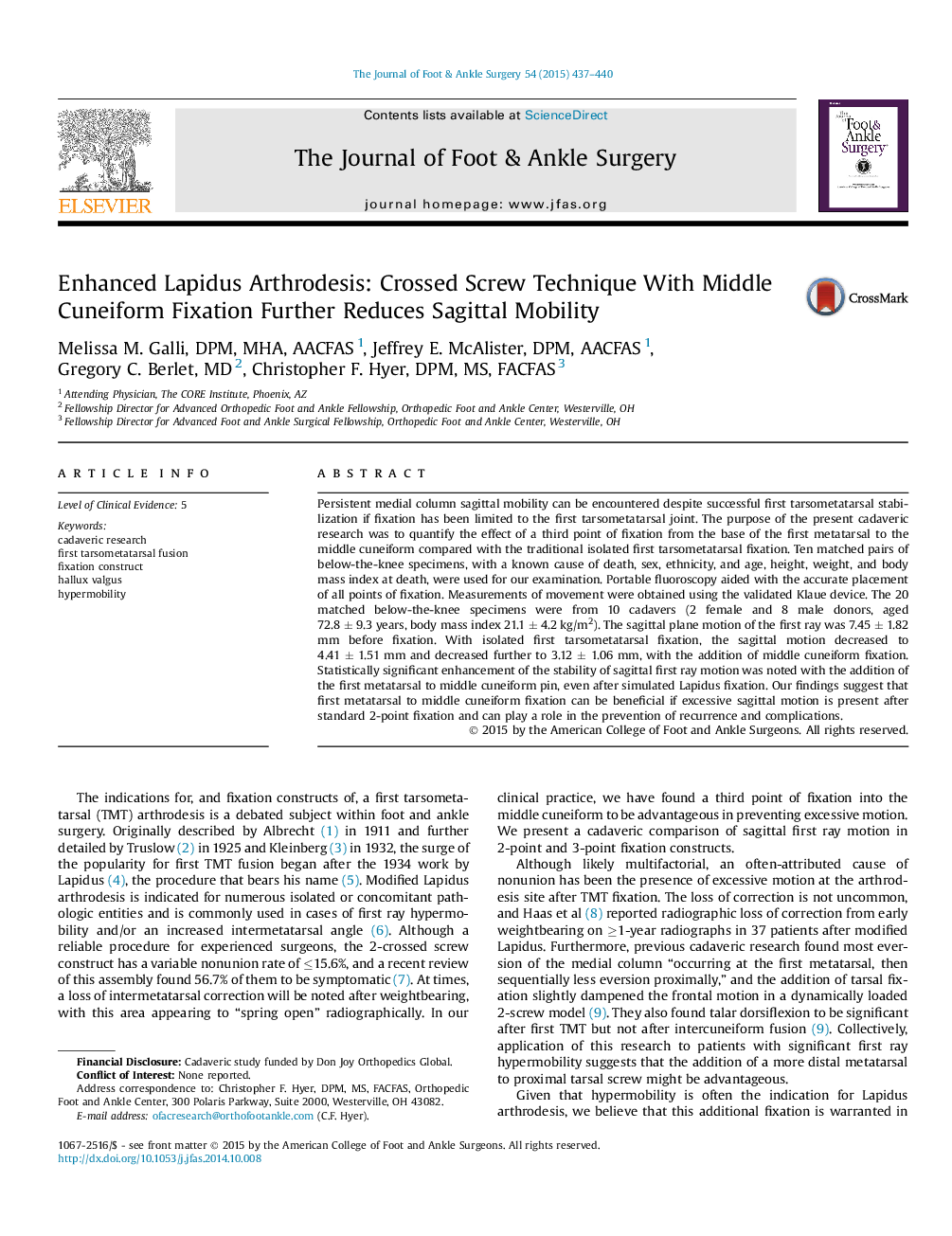| Article ID | Journal | Published Year | Pages | File Type |
|---|---|---|---|---|
| 2719391 | The Journal of Foot and Ankle Surgery | 2015 | 4 Pages |
Persistent medial column sagittal mobility can be encountered despite successful first tarsometatarsal stabilization if fixation has been limited to the first tarsometatarsal joint. The purpose of the present cadaveric research was to quantify the effect of a third point of fixation from the base of the first metatarsal to the middle cuneiform compared with the traditional isolated first tarsometatarsal fixation. Ten matched pairs of below-the-knee specimens, with a known cause of death, sex, ethnicity, and age, height, weight, and body mass index at death, were used for our examination. Portable fluoroscopy aided with the accurate placement of all points of fixation. Measurements of movement were obtained using the validated Klaue device. The 20 matched below-the-knee specimens were from 10 cadavers (2 female and 8 male donors, aged 72.8 ± 9.3 years, body mass index 21.1 ± 4.2 kg/m2). The sagittal plane motion of the first ray was 7.45 ± 1.82 mm before fixation. With isolated first tarsometatarsal fixation, the sagittal motion decreased to 4.41 ± 1.51 mm and decreased further to 3.12 ± 1.06 mm, with the addition of middle cuneiform fixation. Statistically significant enhancement of the stability of sagittal first ray motion was noted with the addition of the first metatarsal to middle cuneiform pin, even after simulated Lapidus fixation. Our findings suggest that first metatarsal to middle cuneiform fixation can be beneficial if excessive sagittal motion is present after standard 2-point fixation and can play a role in the prevention of recurrence and complications.
